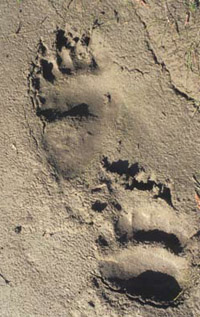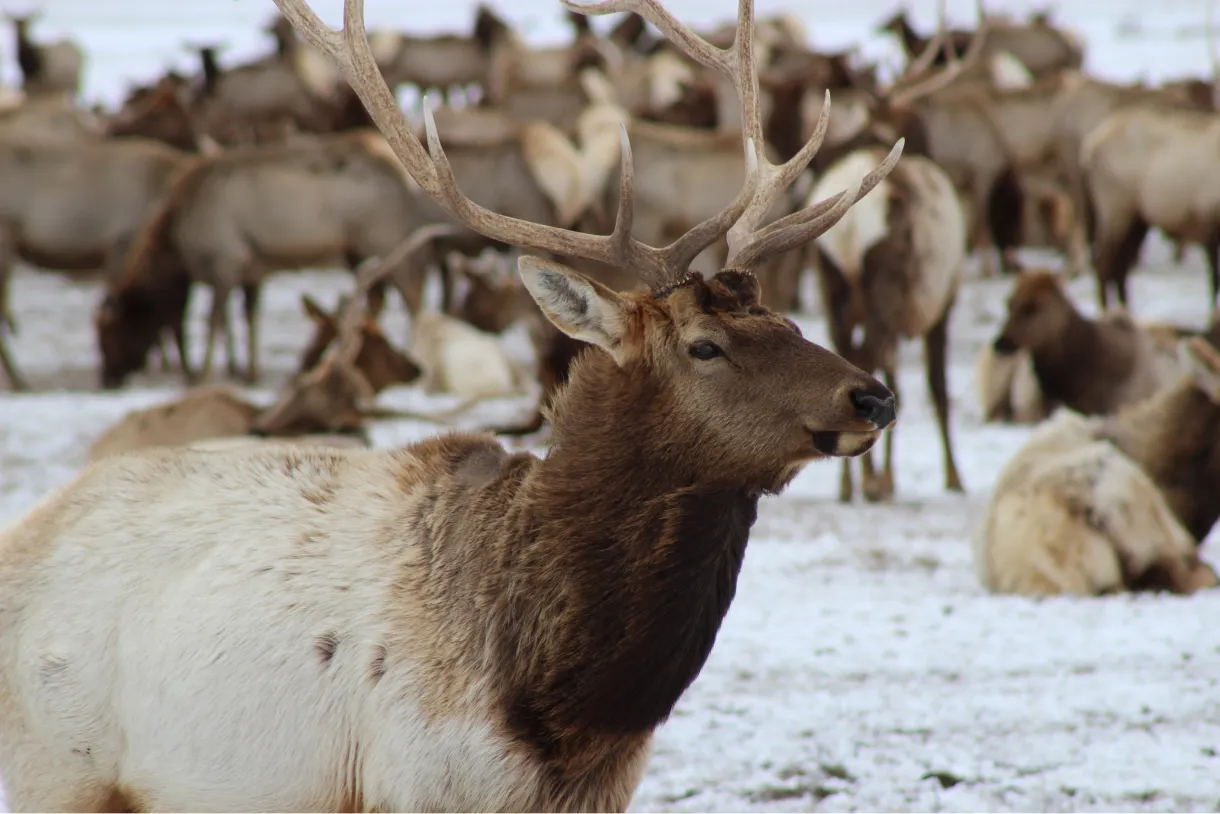Many view the 1995 reintroduction of wolves to Yellowstone National Park as a landmark conservation achievement—one that historians may refer to as the point when Americans changed their attitudes toward large predators. But as a conservation leader who was involved with this issue for more than 15 years, I view it as a poor model for at least three reasons: it took too long, it cost too much, and it left too many people polarized.
Those of us working on species restoration knew we needed to find a better approach, one that got results faster, was less costly, and won broader public support. When the prospective reintroduction of grizzly bears to the Bitterroot ecosystem—the large wilderness complex in central Idaho and western Montana—first surfaced in the mid 1990s, it presented an opportunity.
Across the spectrum
Just as livestock producers were the alpha opponents of wolf restoration, it was expected that timber interests—people who work in the woods and in the mills—would be the primary opponents of Bitterroot grizzly reintroduction. Instead of launching a campaign to restore bears, conservation leaders from the National Wildlife Federation (NWF) and Defenders of Wildlife (which I worked for at that time) took a different approach: work with timber and labor interests to find a solution that met the needs of both parties. It marked the start of the most interesting chapter of my 30-year conservation career.
The first meeting took place at the NWF office in Missoula, Montana. Four men, all well over 200 pounds with chips on their shoulders, trooped in. None were smiling. They complained that environmentalists use the Endangered Species Act (ESA) as a tool to stop logging, whether or not it is necessary for protection of a species. In fairness, we conservationists had chips on our shoulders, too. We had no confidence that these loggers and mill workers had any commitment to protecting bears or to conservation.
But after several meetings and many months, we came to know each other better, and found we had more in common than we realized. Many of us shared interests in fishing, hiking, and hunting; everyone seemed to have a similar connection to the place where we live.
We learned that the loggers/mill workers weren’t afraid of bears; they feared the rules that might accompany them. And most importantly, they feared a federal top-down approach to species restoration that might deny local people a voice in management decisions. They asked us to stand in their shoes. If a large, dangerous animal was going to be reintroduced where we lived, worked or recreated, wouldn’t we want to have a say in the rules?
The notion that people who live near bears should have a significant voice in their management resonated with everyone. Ultimately, that premise became the cornerstone of a unique accord. Our diverse groups agreed that a committee composed primarily of local citizens (ten citizens and five agency representatives) should have primary management authority for the reintroduced Bitterroot grizzly bear population. This committee would have precisely the same responsibility as federal agencies: Their actions would have to demonstrably result in recovery of the species. The committee was also charged with constructing a management plan that minimized impacts on local people and local economies.
Outside the Box
The “experimental population” provision of the ESA provided the framework that allowed our group to step outside the endangered species box. Congress—with the support of conservationists—passed this amendment in 1982, specifically to encourage restoration of controversial species. Wolves and grizzlies were at the top of the list of animals they had in mind.
The proposed Bittterroot grizzly reintroduction was to be five bears per year for up to five years. A key premise was that the existing habitat was deemed suitable for reintroduction, unless the Citizen Management Committee—guided by the best available science—determined otherwise. Some environmentalists blasted NWF and Defenders for agreeing that the status quo was sufficient for grizzly bear reintroduction. They argued that without new protections from road-building and logging, bear habitat would be degraded.
But our review of the relevant Idaho and Montana forest plans revealed that 3.7 million acres of excellent bear habitat were in designated wilderness, another 4 million acres of habitat were roadless (with direction to remain so), and that due to elk conservation measures, several million more acres were being managed at road densities favorable to bears.
It’s a curious irony that a project grounded in collaboration became mired in partisan politics.
Our evaluation concluded that reintroduced bears would have nearly 8 million acres of secure habitat in the Bitterroot region, substantially more than the bear populations in Yellowstone or northwestern Montana. Leading bear scientists supported our conclusions.
It was déjà vu with Yellowstone wolf reintroduction all over again. When we were on the cusp of wolf reintroduction in 1994, some environmental groups insisted—despite objections from wolf experts—that a successful reintroduction demanded additional habitat and mortality constraints. They even went so far as to file lawsuits to stop the reintroduction (as did the livestock industry). Fortunately their efforts failed, and ten years later our burgeoning Yellowstone wolf population stands as testimony that those scientists were right.
Bear Blackout
Despite our collaborative approach, the citizen management proposal was attacked from all sides. One environmentalist proclaimed it “the biggest sham ever perpetuated in the northern Rockies” and told NWF and Defenders, “When you crawl in bed with the enemy you become the enemy.”
Our timber and labor partners didn’t fare much better. Then Idaho Congresswoman Helen Chenoweth declared: “Naturalists will tell you that when a predator seizes hold of its prey, the prey will often stop struggling. Why does that come to mind when reading reports that the forest products industry and timber workers are cooperating with enviros who are driving grizzly reintroduction?” But our practical approach also won over many people, including Montana’s governor at the time, Marc Racicot. Nearly every major newspaper in the region editorialized in favor of our approach. Major media outlets, including the Washington Post and ABC Nightly News featured this unique collaboration.
Our innovative approach to grizzly reintroduction also won the support of the U.S. Fish and Wildlife Service (FWS), the agency responsible for endangered species recovery. They made it an alternative in their 1997 draft environmental impact statement, and in November 2000, made a final decision to reintroduce grizzly bears to the Bitterroot ecosystem, utilizing the citizen management approach. The State of Idaho filed a lawsuit against this decision on the last day of the Clinton administration.
When Gale Norton became the new Secretary of the Interior, she quickly announced her plans to rescind FWS’s Bitterroot grizzly decision in light of the State of Idaho’s objections. Seven years into the Bush administration, the grizzly reintroduction decision remains on the shelf. FWS claims that a lack of funds is the reason they have failed to implement the reintroduction. That claim rings hollow. It’s a curious irony that a project grounded in collaboration became mired in partisan politics.
Ongoing Saga
But the story doesn’t end there. In September 2007, a hunter shot a grizzly bear in Kelly Creek, the first confirmed grizzly in the Bitterroot ecosystem in more than 60 years. The unfortunate demise of this bear may have significant implications for future management.
First, it could trigger the need for other federal agencies to consult with the FWS before undertaking projects in the area that impact bear populations. Most industry leaders view these consultations as the most onerous part of the ESA.
Second, experimental reintroduction of endangered species is only permitted when the reintroduced population is “wholly separate geographically from non-experimental populations of the same species.” In other words, if enough bears show up in the Bitterroot ecosystem to constitute a population, the opportunity to use the more flexible rules afforded by the experimental population designation—most notably, the citizen management approach— would be lost.
As political leaders fully comprehend the implications of this recent bear occurrence in the Bitterroot, it is possible that grizzly reintroduction will receive a new airing. That’s positive, as the citizen management approach is an experiment that deserves a trial. Because it has the potential to chart a new direction, I’m more enthused about Bitterroot grizzly reintroduction than any endangered species recovery project I’ve worked on. New models are hard to come by.





